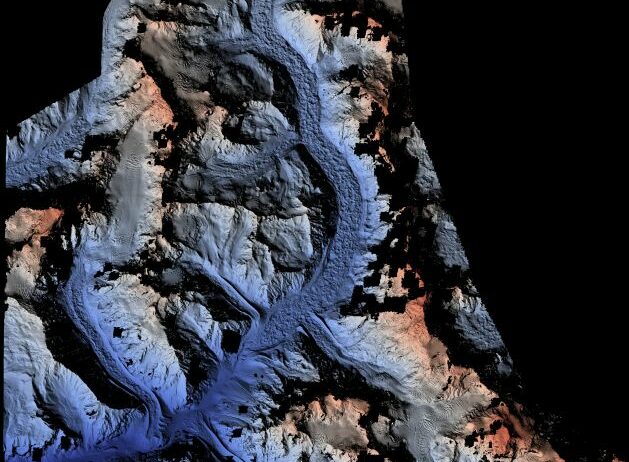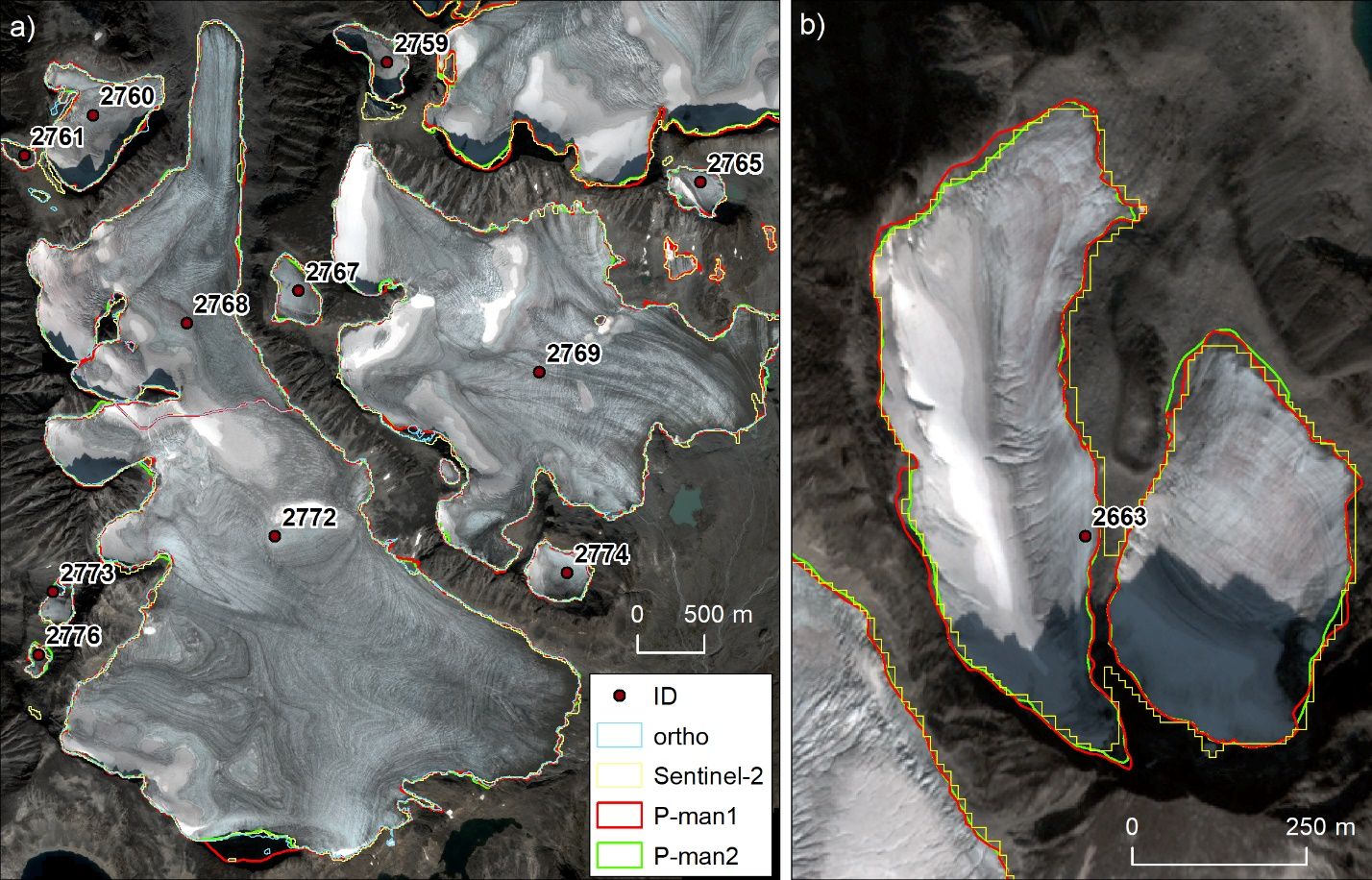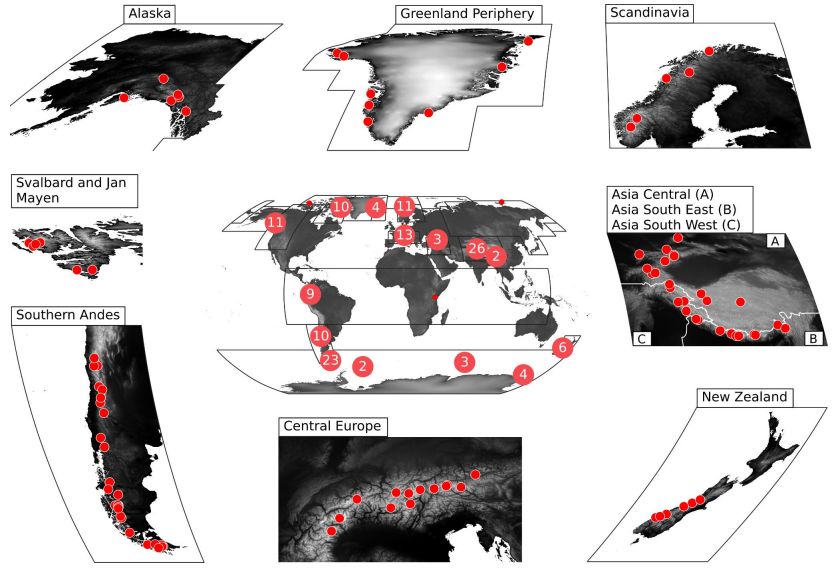Kneib et al.: Controls on ice cliff distribution and characteristics on debris-covered glaciers
Ice cliff distribution plays a major role in determining the melt of debris-covered glaciers but its controls are largely unknown. We used 14 Pléiades images, the majority of which were provided by the Pléiades Glacier Observatory (PGO), to assemble a data set of 37,537 ice cliffs and determine their characteristics across 86 debris-covered glaciers within High Mountain Asia (HMA). This was made possible thanks to the combination of automated mapping routines applied to the atmospherically-corrected multi-spectral images, and the extraction of topographic information from the Digital Elevation Models (DEMs) derived from the Pléiades stereo pairs. We find that 38.9% of the cliffs are stream-influenced, 19.5% pond-influenced and 19.7% are crevasse-originated. Surface velocity is the main predictor of cliff distribution at both local and glacier scale, indicating its dependence on the dynamic state and hence evolution stage of debris-covered glacier tongues. Supraglacial ponds contribute to maintaining cliffs in areas of thicker debris, but this is only possible if water accumulates at the surface. Overall, total cliff density decreases exponentially with debris thickness as soon as the debris layer reaches a thickness of over 10 cm..
Kneib, M., Fyffe, C. L., Miles, E. S., Lindemann, S., Shaw, T. E., Buri, P., McCarthy, M., Ouvry, B., Vieli, A., Sato, Y., Kraaijenbrink, P. D. A., Zhao, C., Molnar, P., and Pellicciotti, F.: Controls on Ice Cliff Distribution and Characteristics on Debris-Covered Glaciers, Geophysical Research Letters, 50, e2022GL102444, https://doi.org/10.1029/2022GL102444, 2023.





